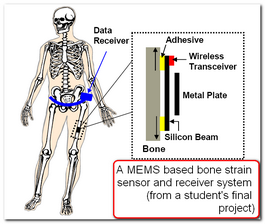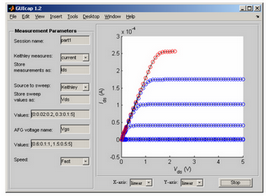Kursad Araz
Postdoctoral Research Associate, University of California, Berkeley
The Herr Laboratory, Bioengineering Department
Teaching
I enjoy teaching a lot. I get energized with interacting people and especially students. Over the course of my undergraduate and graduate studies, I have had numerous teaching opportunities in which I gained some experience.
ECE432 Introduction to Micro-Electro-Mechanical Systems (MEMS)
 (Fall 2006)
(Fall 2006)
Out of the numerous courses I was involved, this was the course I enjoyed the most. In this class I was the teaching assistant and I prepared and lectured the microfluidics part of the course. Since the course was very interdisciplinary, students not only learned the microfabrication techniques and fundamentals of microelectromechanical systems but also experienced the imagination-limited span of the MEMS field. I prepared and lectured numerous minicourses in this class, which enabled students to learn and use Cadence, L-edit and ANSYS-Multiphysics edition in order to model and simulate complicated MEMS devices designed by themselves as the part of their final project. Semester long projects involved many meetings with students for mentoring and guiding towards the execution of the projects.
 ECE315 Introduction to Microelectronics
ECE315 Introduction to Microelectronics
(Spring 2007)
In this course, as the laboratory teaching assistant, I helped students to perform experiments on CMOS digital swithces, analog amplifiers, differential pairs, transient and frequency analysis in CMOS, biasing BJT and MOSFET transistors and simple CMOS digital circuits. Students had chance to monitor voltage and current characteristics on site through a custom circuit board controlled by a computer through a Matlab intefrace.
ECE488 Radio Frequency (RF) Circuits and Systems
 (Spring 2008)
(Spring 2008)
In this course, under supervision of Dr. Wesley Swartz, I was responsible in teaching the laboratory material and managing my laboratory sessions. In these sessions students had built and investigated various RF circuits such transmitters, modulators, filters, transmission lines, oscillators, etc.. Applications included communication systems, radio and television broadcasting, radar, radio, and radar astronomy. In that semester Dr. Swartz received the Ruth and Joel Spira Outstanding Teaching Award.
AEP363 Electronic Circuits
(Fall 2001, Spring 2002)This was a comprehensive electronic circuits course designed for physics and applied physics students. Course had started with simple RLC circuits, continued with transistor amplifiers, logic circuits, ADC and DAC conversion, data acquisition and ended with transducer applications. In this very fast paced course I was responsible for my laboratory session which involved not only teaching but also troubleshooting of not-working circuits and smoking –short circuited- transistor chips. Since it was a face-paced course and the laboratory grades were forming the bulk of the grades, I come up with a mid-semester feedback mechanism which prevented some students to lose track of the course requirements and deadlines. The reference book for the course was Art of Electronics by Horowitz and Hill.
PHYS290 Computer Usage in Physics
(Spring 1999)As an undergraduate student with some computer experience, I was offered to be the laboratory instructor of the Computer Usage in Physics class which aimed to teach DOS, Windows and Office applications to students who did not have any prior computer experience. While my experience as a teacher was very limited at the time, in this particular course I realized that I love and enjoy teaching as much as research and made the decision that teaching should be included in my career plans.